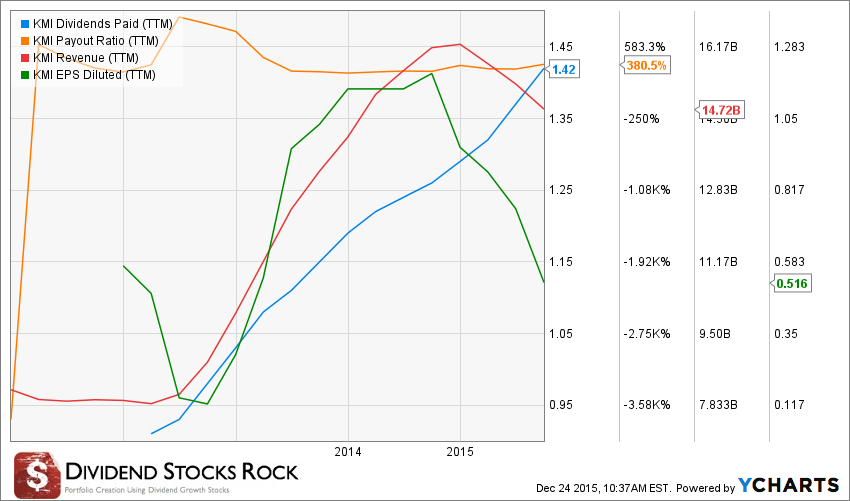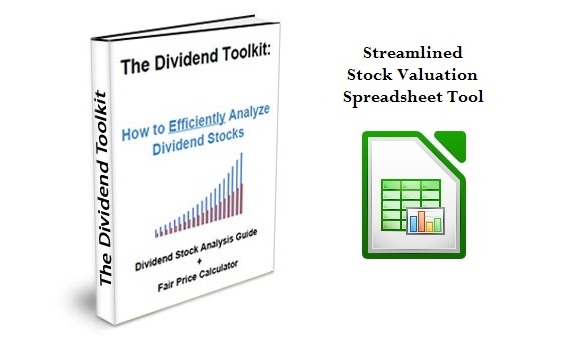
I wanted to start the New Year off with a solid base. The recent discussions I’ve had with friends over the Holidays made me realize how sometimes we complicate our lives for nothing. After 13 years of investing for my own portfolio and working in the financial industry, I know that the “flavor of the month” is different each year, but it all comes down to the same problem:
We all look for an efficient way to buy and sell our stocks
Some will use the buy & hold strategy and others will day trade or use technical analysis. Then, you will have others in the middle using ETFs indexing to implement a couch potato investing strategy. Within the crowd, you will also find growth investors, sometimes called traders and there are also value investors, a cousin not too far from the buy & hold people. Dividend Investing? Of course! That’s another type of investor focusing on revenues & yield.
We all have our strategy and “magic recipe” to find sound and solid investments. But when we hit some headwind and volatility, the investing model is tested…. That is if we have one! I’ve been called many things such as “trader” or “fake dividend investor” because I’m not solely focusing on dividend yield and payment (remember that post?). However, the point I think I failed to highlight is that I focus on having a strong investing model instead of counting how much I make per month in dividend income. Funny enough, there are less Kinder Morgan (KMI) fans telling me they receive so much each month from their high yield dividend stocks now. The “Kinder Morgan Case” happened because many investors forget that buying a dividend stock doesn’t make you a dividend growth investor. Kinder Morgan cut their dividend payout by 75% in 2015 and several investors didn’t see that coming. However, it seems quite obvious to me that things weren’t going well for a while:

Stagnating revenues, erratic earnings and a ridiculously high payout ratio…. Death was announced a while ago, they just didn’t read the memo. How is that? Because they probably don’t have a solid investing model.
There are obviously limits to an investing model and we are all going to lose money once in a while with some of our investments. The idea is to win more often than you lose and never concentrate your investment so you don’t lose most of your money in a single losing trade.
I’ve also lost money on a few of my investments, but I always made sure those were minor positions with a higher risk/reward ratio. Sometimes I was lucky, sometimes it didn’t work. But it never affected my overall return by that much because I can rely on a sound investing model.
Today, I’m suggesting a simple, but very efficient method to develop your own investing model. The method can be summarized in three simple words; Build, Buy & Manage. Each of them will come with some tools to help you realize your own investing model. Sometimes, simplicity is the ultimate sophistication:
Build
The most important work of investing is done prior buying any investment. Well before you make your first share purchase, you must know how to build your portfolio. The portfolio building process has very little to do with what you buy, and is more linked to why you do it. This can also be defined as your “investment model”. The model is a set of rules that will dictate what you buy, why you buy it and when you sell it. The model answers the following questions:
How long do you wish to invest before you withdraw all your money?
What is your risk tolerance? Do you mind if your portfolio falls in value by 20%?
Which kind of businesses you wish to buy? Penny stocks? Blue chips? Dividend paying stocks?
Are you looking for a source of growth, a source of revenue or both?
How much do you want to invest? Do you want to invest more in the future?
How will you use future liquidity in your portfolio?
What will your asset allocation be?
What are the rules that will make a company interesting for you?
What are the reasons that will make you sell shares of a company?
Which valuation method will you use to make your purchase?
What are the specific metrics you will use to identify potential companies to be added to your portfolio?
Why are these metrics important to you?
If you have 3 hours to use for investing, I think you should use 2:45 out of them to design your own investing model.
I’ve designed my own dividend growth model used to manage my portfolio. I didn’t come up with these investing rules out of the blue. Each rule has been written after these four years of trading dividend stocks, reading through many financial research publications and listening to top investors and portfolio managers’ wisdom. The 7 investing rules are as follow:
#1: HIGH DIVIDEND YIELD DOESN’T EQUAL HIGH RETURNS
#2: FOCUS ON DIVIDEND GROWTH
#3: FIND SUSTAINABLE DIVIDEND GROWTH STOCKS
#4: THE BUSINESS MODEL ENSURES FUTURE GROWTH
#5: BUY WHEN YOU HAVE MONEY IN HAND – AT THE RIGHT VALUATION
#6: THE RATIONALE USE TO BUY IS ALSO USE TO SELL
#7: THINK CORE, THINK GROWTH
I have detailed and provided the results of my research to establish each rules here.
What is really important is that you define your own model. You can gain inspiration from others (I’ve met with many investors with rules similar to mine), but you must clearly define your rules. They will help you manage your portfolio when the market is down 20% or when one of your company’s shares jump by 45% in a single year. Emotions usually play an important role in how we manage our portfolio when we don’t have a sound investing model to follow. In doubt, always rely on your model…
The Tool to Build Your Portfolio:
I’m closer to a value investor than a day trader. I guess that if you read my blog, we share this in common! I’ve selected this book that should help you to build a sound portfolio. The best book around to learn and master value investing is definitely The Intelligent Investor by Benjamin Graham:
Buy
The buying step is a very fun one. For me this is the most exciting part! I love doing stock research and learning about new companies. Since I manage several portfolios over at Dividend Stocks Rocks, I have the opportunity to read a lot more financial statements. This sometimes makes my life a little bit more difficult since I’m confronted by many great companies. I can’t buy them all, and not all of them are true bargains at the time I look at them.
Some investors will take several hours to accurately evaluate a company. I would rather use many hours to look at the company’s fundamentals and study its economic moat than try to identify its true value. The reason is quite simple; if I buy a good company, shares will eventually go up. If I buy an undervalued company based on my calculations and I’m wrong, I’ll never make money from my investment. Plus; the fair value you find is always based on your assumptions. If these are off, you did all this work for nothing. Since your assumptions are a prediction of the future, there is no way to make sure you are right.
On the other hand, you can invest several hours looking at a company’s fundamentals. The metrics you use are determined by your investing model. The way you look at them are also defined in your model. This is why it is so important to correctly define how you will invest before pulling the trigger.
The Tool to Buy
I buy companies that will show both stock appreciation and dividend payment growth potential. I like to find companies that will reward me during tougher periods through their dividend payment but will also be able to surf the wave and generate an important capital gain over the long haul. I recently published a list of 10 companies meeting these requirements.
You can check them out here.
Manage
Managing your portfolio is the delicate part of your investment process. This includes how you will manage your assets once your portfolio is completely built. It will help you determine how many different companies of a same sector you want to hold. How you will manage new money such as dividend income or additional lump sums. This will also include the part where you sell stocks. Selling stocks is never easy;
Will you sell shares of a company that has been skyrocketing over the past 3 years?
Will you sell shares of a company that is down by 30%?
Will you sell shares of a company that posted negative results?
Will you sell upon a dividend cut?
Once you buy shares of a company, you must follow it. Reading their financial statements and news releases will help you identify if you should buy more of the same company, hold the shares because the company is doing well or selling the company because it no longer fits your investing rules.
I noticed that many investors struggle with this part of their investment process. They wonder when to buy and sell their stocks. I usually sell stocks upon a dividend cut but I try to follow each of my holdings closely in order to sell a company before the irreparable damage happens.
When I purchase shares of a company, it is because I’ve clearly identify some reasons why I buy it. These make up my investment thesis. If my investment thesis fails to materialize, the reason why I bought a stock is not good anymore and I sell. This process usually avoids being hurt by a dividend cut.
The Tool to Manage Your Portfolio
Then, there is the Dividend Toolkit for investors wanting to build exponentially growing passive income streams through dividend stocks. If you’re an investor that is willing to put in the time to make smart long-term investment decisions and don’t want to spend hours and hours every day analyzing companies, then you’ll find this package useful. It’s specifically about how to maximize your time by using a streamlined stock analysis method to quickly get the most useful pieces of information about a company and find the best picks.

Your Package to Start the Year
If you are interested in starting the year off on the right foot, I have a great package to offer you. This article is only the beginning of a long journey toward dividend growth investing. In the end, the true power of dividend investing is materialized through time. The longer you keep your dividend growth stocks, the higher the return you will earn from your investments. And this is how you will succeed in building a solid retirement portfolio.
In order to help you out while building this portfolio, I’ve created a dividend growth investing platform called Dividend Stocks Rock. This is an online membership site that gives you access to all the tools and techniques you can personally use to build a rock solid portfolio. This is not about stock recommendations or some kind of guru principles. It’s about sound investing decisions made based on solid stock research. And 95% of the work is done for you.

Dividend Stocks Rock will build your knowledge, skills, and investment capability from the ground up. You’ll master the techniques you need to own in order to understand what drives individual stock growth to build the portfolio growth you want. Most importantly, it will give you relevant data at your fingertips to allow you to put the process into action from day 1.
Dividend Stocks Rock is more than a premium investing newsletter:
- We manage real-life dividend portfolios and send trade alerts when we buy or sell a stock.
- We provide you with pre-screened stock lists with various metrics.
- We create 1 pager stock analyses to save you time versus reading numerous pages of financial information.
- We help you in your valuation process with an excel spreadsheet calculator using a two stage dividend discount model.
- We write a bi-monthly premium investing newsletter to keep you updated on the stock market.
We have priced this product for the individual investor! Personally, I am sick and tired of the investment industry fleecing the individual investor and charging outrageous mutual fund fees or brokerage costs because they have “convinced” (read: brainwashed) us into believing we cannot invest on our own. They say: invest on your own and you are destined to a life of poverty! I say NOT… You can check the various pricing options here.
I sincerely hope this guide will help you build a stronger retirement portfolio and enable you to reach your goals stress free.
Good luck with your investments,

